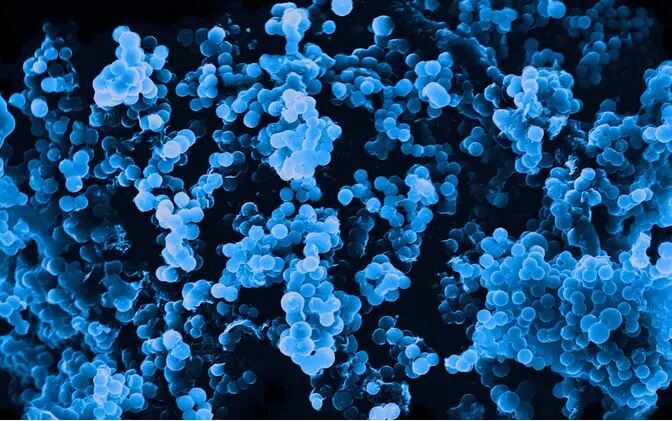Instead of burning it, people have started to use carbon to store energy produced in other ways. However, in order to build state-of-the-art supercapacitors, it is necessary to describe exactly what the carbon material in it looks like. A doctoral dissertation defended at the University of Tartu by Riinu Härmas now offers guidance on this.
“Figuratively speaking, we have been making different materials over the years and putting them in a supercapacitor to see how well they work,” said the recent doctor of chemistry. “However, systematical approaches to the characterisation of the structure of carbon have been lacking. I would be very pleased if my work helped people understand how careful we should be with our main characterisation methods.”
The ABC of Carbons
In addition to the naturally occurring carbon materials, chemists have now produced hundreds of thousands of carbon materials. Even when looking at charred pancakes and activated charcoal sold in pharmacies, their properties can differ considerably even if they seem indistinguishable to the naked eye. For example, the latter contains a lot of tiny pores.
The large internal surface area of the pores makes it easier for reactions with other chemical compounds or the storage of gases or electric charges to take place. That is why porous carbons are gaining more popularity in the green revolution with the rise in electrification and reduction of carbon emissions. They can also be made from anything.
“You can find articles on how they have been made from bio-waste or even tree leaves,” said Riinu Härmas. “Among other things, we have found that even regular sugar can be turned into a pretty well-functioning supercapacitor.” Unfortunately, materials derived from organic materials usually contain a large number of useless additional components that do not react with anything.
In practical terms, this can mean, for example, that although the base material is cheap and environmentally friendly, a large amount of useless weight must be carried in order to store the charge. This is why Härmas focused her work on carbons synthesised from inorganic carbides. By having the carbide react with chlorine, for example, it is possible to get essentially completely pure carbon structures.
“For carbide-derived carbons, you can choose a suitable carbide and synthesis temperature,” she explained. “This way you can get a better understanding of how it would be best to design this material for your needs.”
Depending on the carbide used and the synthesis temperature, both the pore size and the shape may vary. Physicists-chemists have an array of different methods for determining this. Härmas’ doctoral thesis shows that researchers are getting too comfortable at the cost of easily comparable results.
Comparing the incomparable
“Various carbons have been vastly synthesised and researched, but how can we actually compare them when the quality of their descriptions fluctuates so much?” asked Riinu Härmas. “If conclusions are drawn from measurement data in different ways then those conclusions cannot be compared. What is the use of such results?”
One example is the graphene layers in a carbon material. The higher the synthesis temperature, the more the structures combine with each other, making the material more and more unified and crystalline.
Wide-angle X-ray scattering is often used to assess this. According to Härmas, in the scientific literature, the diffractograms of porous carbon materials are often analysed based on the assumption that the width of the diffractogram signal only depends on the size of the small crystals. As a rule of thumb, the smaller the crystals, the wider the signal.
“However, in the case of disordered porous carbons, we can see that it can affected by all kinds of irregularities, from defects to tension in the material,” said Härmas. “It is really sad to see how articles today rely on some of the methods derived in the last century.” This can result in an underestimation or overestimation of the width of the graphene layer and much more.
Another important method used to describe carbon is the Raman spectroscopy. In this method, the change in the frequency of light is caused by the vibrations and oscillations, which are characteristic to a specific material. Raman spectroscopy can be used to assess both the composition of the compounds and the chemical bonds. The shape of the Raman spectrum of porous carbons depends very much on the defects inside the graphene layers, i.e. whether, how much and what type of them can be found in the carbon layers.
Although the method is rather straightforward, careful spectral modelling and deconvolution work should be done to get reliable results.
“Unfortunately, every workgroup has their own way of modelling this spectrum,” she explained. “For the sake of convenience, usually an older article where their approach more or less worked is used as a basis. Looking at scientific literature as a whole, this makes it difficult to compare results.”
According to Härmas, this is not necessarily intentional but rather done for convenience. Finding the best and most meaningful way for the deconvolution of the spectra is a rewarding, but tedious activity. For the Raman spectra of porous carbons, many deconvolution methods result in a reasonable fit. This makes it difficult to decide which solution would actually convey physically meaningful results.
In her doctoral dissertation, Härmas compared different methods and found the best algorithm for analysing the wide-angle X-ray scattering patterns. The experiments of Härmas and her colleagues at the University of Tartu have confirmed that the results received through this method are indeed clearer and easier to interpret.
She also found a well-functioning combination for Raman spectrum analysis. In the past, this method has been used to analyse the spectrum of carbon blacks in addition to carbons synthesised from carbide. “I hope this will be a small leap forward in the methods we use to describe carbon,” said the chemist.
Each to their own
Riinu Härmas’ doctoral dissertation covers practically all carbon materials synthesised from carbides that have previously been used as electrode materials for supercapacitors at the University of Tartu. This approach also gave a better overview of which source materials are actually suitable for which applications. For example, the comparison showed that carbon synthesised from silicon carbide is best suited for storing hydrogen.
However, according to previous research, it works relatively poorly in supercapacitors. “That makes sense because mesopores (i.e. pores with a diameter of 2-50 nanometers) are usually the most important for electrochemical applications, because the ions do not actually fit in the smallest (less than one nanometer) pores suitable for storing hydrogen,” said Härmas.
Carbons synthesised from molybdenum carbide can contain many mesopores, especially if higher synthesis temperatures have been used. This should be taken into account when synthesising carbon materials.
The chemist plans to take some time off after the defence. In the long term, she intends to continue researching and developing materials that are important for renewable energy. For example, the search for methods to facilitate the recycling of carbon fibres will become important in the future. As ever lighter and stronger materials are being used for the manufacture of cars to make them more energy efficient, carbon fibres are also gaining popularity.
Access Riinu Härmas’ doctoral thesis in full from the digital collection of the University of Tartu. The translation of this article from Estonian Public Broadcasting science news portal Novaator was funded by the European Regional Development Fund through Estonian Research Council.
 Back
Back



